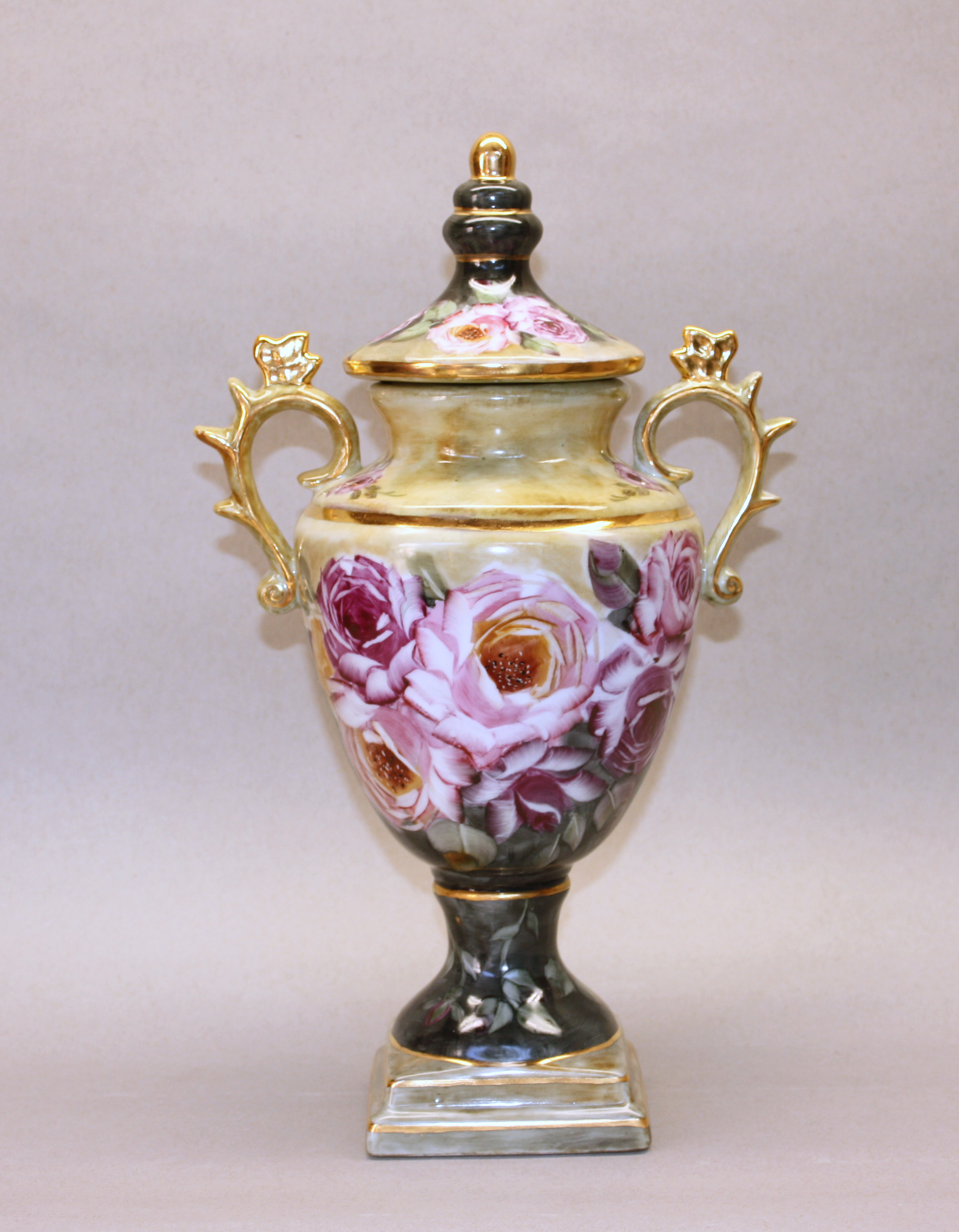China Painting Workshop with Susan Spohr
 Class/Workshop
Beatrice Wood Center for the Arts
Class/Workshop
Beatrice Wood Center for the Arts
Contact Details:
Phone: 805-646-3381.
Email: beatricewoodcenter@gmail.com
Website: View Website
Social Media:
**Events may have been canceled or postponed. Please contact the venue to confirm the event.
Date & Time
Sat, Nov 20 10:00 AM - 4:00 PM
Address (map)
8585 Ojai-Santa Paula Road, Ojai, CA 93023
Venue (website)
Beatrice Wood Center for the Arts
In this workshop, participants will learn how to use China paints to add color and design to ceramics. Following a brief history of China painting, including its use by accomplished artists, participants will learn about the materials and processes. What is needed for a China painting kit, and where to purchase supplies. The use of brushes, how to mix and apply the paints, an overview of penwork, and how to fire the works will all be covered.
Participants will gain a basic knowledge of what supplies are needed and comfortable enough to make up a pallet and start painting at home.
Cost $150. per person ($125. for members)
Includes all materials and a light vegetarian lunch.
About the Instructor
Susan Spohr began working in clay in 1989 and opened her first studio teaching ceramics, porcelain painting, and selling supplies in Pasadena in 1990. Her passion continues as she presently teaches porcelain painting once a week, sells her work worldwide on Etsy, and actively participates in the American Ceramic Society of Southern California, the Betsy Lueke Creative Arts Center, Burbank Art Association, and the Foothill Creative Art Center in the Sierra Madre. Her work has been presented in numerous museums, art centers, and gallery exhibitions.
“In clay, animals always work their magic and have been a great inspiration for me. My sculptures reflect the humor which comes directly from the heart of their behavior in nature, and my sincere hope is that everyone will enjoy viewing them as much as I have enjoyed creating them. My current series of whimsical vehicles requires patience and challenges my attention to detail and execution. While painting on porcelain I cover a range of subjects from mermaids and pirates to nature. However, I find flowers the perfect subjects and gardens are my favorite subjects for painting from memory.” – Susan Spohr
A Brief History of China Painting on Porcelain
Porcelain was created in China in the 7th or 8th century and remains the finest of all clays. It can be made very thin and almost transparent while it is extremely durable. Glazes become brilliant when applied to porcelain. In 1600 it was like no other ceramic the world had seen before.
Europeans saw Chinese porcelain for the first time due to the capture of two Portuguese ships carrying large consignments of Chinese goods in the 16th century – and it was unlike anything Europeans had seen before. In 1604 when Catherina was captured, she was carrying 100,000 pieces of porcelain. These goods were sold to buyers from all over Western Europe at a public sale in Holland. Buyers included Henry IV of France and James I of England. This sale presumably started the European craze for Chinese porcelain. Between 1604 and 1657 over 3 million pieces of Chinese porcelain reached Europe. In 1700 East Indian ships unloaded 146,748 pieces in a European port in one day alone as the market for porcelain grew insatiable.
By the 18th century, Europeans were making their own porcelain in Germany and France where a large source of kaolin was found near Meissen in Saxony.
China painting was created in Japan by the Sakaida family. Called Kakiemon ware, Japanese porcelain was made primarily during the Tokugawa period (1603–1867) by the Sakaida family, who established kilns at Arita, near the port of Imari in the province of Hizen (now in Saga prefecture). Characteristic colors are iron red, light blue, bluish-green, and yellow, and sometimes a little gilding. Themes from between about 1680 and 1720 are markedly asymmetrical, with much of the white porcelain left untouched.
China painting is a sub-class of overglazes. Just as their name implies the paint is applied on the top of the fired glaze. Overglaze china paints are made of ground mineral compounds mixed with flux and or lead. Paints are in powder form and may contain expensive elements including gold used to make deep pinks and purples. The flux is a finely-ground glass and or lead similar to porcelain glaze. The powdered paint is mixed with a medium, typically some type of oil, before being brushed onto the glazed object. The technique is similar to watercolor painting.
